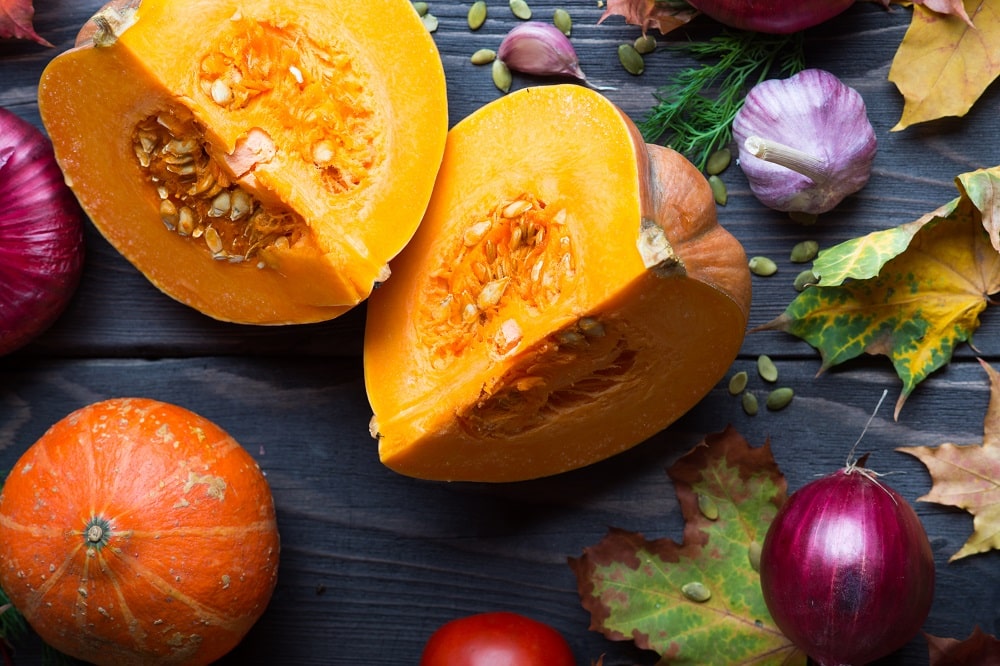Check out this beginner's guide to seasonal eating if you want to save the planet and eat well at the same time!

Jump to:
Seasonal eating is one health trend that I can whole-heartedly get on board with—but it’s not exactly new. Looking back 100 years ago, nobody would have called it seasonal eating. It was just eating what was on hand, ripe, and ready to go!
Seasonal eating is an outstandingly simple food philosophy at its core, yet we’ve complicated it with decades of operating within a gloablized food system. Go into any supermarket in the dead of winter and what would you find? Tomatoes? No problem. Grapes? You bet. Fresh strawberries? Absolutely. Whether grown in a hothouse or shipped half way around the world, we’ve become completely accustomed to seasonless eating. In this sense, seasonal eating is harder than it sounds.
It doesn’t have to be difficult to eat in season, however, or to eat mostly in season if that’s what works best for your family. Here are some of my favorite ways to work more seasonal eating into my diet.
Think Local
At its core, seasonal eating means that you’re eating fresh produce at a time of year when it’s naturally ready for harvest. This means strawberries in June, tomatoes in August, and butternut squash in October. Seasonal eating often goes hand in hand with local eating, since the whole point is reducing your footprint by not trucking food long distances. Usually this means that the produce is harvested at the correct time, when nutrients are at their peak, as opposed to harvesting early so that the produce will better withstand shipping.
What is available seasonally will largely depend on where you live. If you live in California, you’re going to have a very different range of produce available in the winter months than if you lived in New York. I live in Sweden where the growing season is exceptionally short, so not much is available in the winter months other than long-storage vegetables such as cabbage, potatoes, apples, and carrots. Consult a growing guide to see what’s grown in your area and when it’s in peak season.
Visit Your Farmer's Market
Your local farmer’s market is an excellent indicator of what’s in season, and—as an added bonus—you get to chat with the folks who grew your food! The produce stands at the farmers market will usually be groaning with tomatoes and massive zucchinis at the end of summer, winter squash in the autumn months, and kale, potatoes, broccoli, and cabbage in the winter. No matter the time of year, farmer’s market produce is usually much fresher than what you’d find in the grocery store and has often been harvested within the last 24 hours!
Get Involved with a CSA Program
CSA—community supported agriculture—programs are another great way to eat in season. The idea is that you pay for a yearly or monthly subscription to a farm or group of farms. In exchange for paying the farmers money up front, you’ll receive a box of produce on a weekly or monthly basis. CSA programs are usually a fun way to learn about what’s in season, and experience fruits and vegetables that you may not have chosen to buy otherwise. It also benefits farmers by helping them pay for their operational costs ahead of time—win win!
Check Out the Produce Aisle
Even though supermarkets do carry some of the same foods throughout the year, they also tend to switch up others seasonally. My local supermarket will always carry an abundance of chanterelle mushrooms in the autumn, local asparagus in the spring, and corn in the late summer. Be sure to check the signs so you can check where the produce comes from so you don’t accidentally buy imported strawberries when the local ones are at their peak. Or you can simply ask your grocer where things come from!
Try New Things
What’s that weird spiky vegetable you’ve seen a few times but have never tried? Perhaps you’re not familiar with it because it only just came into season. Ask around and open up your mind—and your taste buds.
Read Food Blogs
Food blogs tend to follow seasonal food trends, just like the stores do. So if you’re wondering what’s in season and how you should cook it, spend some time perusing your favorite sites for inspiration. Pinterest is another great source for this, with seasonal foods cycling throughout the year.
Fall produce photo via Shutterstock.


Comments
No Comments